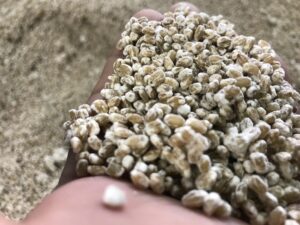 Fermentation lies at the heart of Japanese cuisine – and many of Mitoku’s most popular products. Perhaps the most vital element in the production of these foods is koji, to the extent that it has been named Japan’s kokkin or “national fungus”. Ask any brewer of soy sauce, miso, rice vinegar, or a host of other traditional Japanese staples, and they will tell you that good koji is a key part of their product. But what exactly is koji?
Fermentation lies at the heart of Japanese cuisine – and many of Mitoku’s most popular products. Perhaps the most vital element in the production of these foods is koji, to the extent that it has been named Japan’s kokkin or “national fungus”. Ask any brewer of soy sauce, miso, rice vinegar, or a host of other traditional Japanese staples, and they will tell you that good koji is a key part of their product. But what exactly is koji?
Koji is a fermentation starter made with the fungal culture Aspergillus oryzae. This culture is added to steamed grains (generally rice or soybeans), where it grows rapidly. During this incubation period, the koji becomes rich in enzymes, which are then used to break down the raw ingredients and drive the critical fermentation process. In this way, koji plays the role of nature’s chef, imparting fermented foods with their distinct taste, complexity, and aroma.
In Japanese, a distinction is made between the koji spores – known as koji kin – and the inoculated grain, which is simply called “koji”. Koji itself can be categorized depending on the type of grain: koji made with rice is known as “rice koji”, for example, while koji made from barley is known as “barley koji”. Different types of spore and grain interact to give each kind of koji its own personality.


